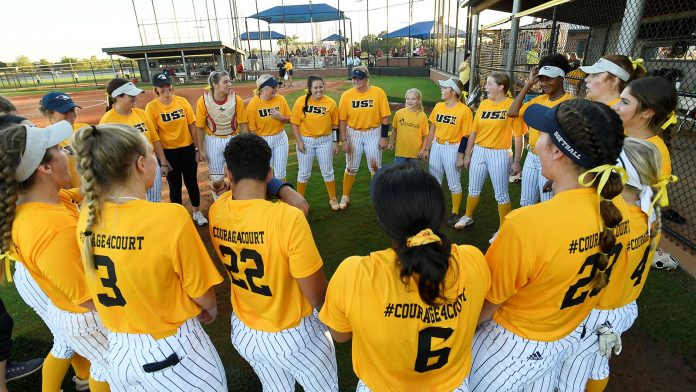Richard Moss, M.D., Ear Nose and Throat Surgeon, pulls no punches in his latest book titled The Empire of Eunuchs: How the Republican Party Betrayed America he accuses the Republican Party as being “no different than the very same Democrat Party it claims to oppose.”
Calling the daily assault on our country “a destructive jihad against the [American] economy,” Moss clearly elucidates how both parties have threatened the republic and its founding principles as they attack the federal and constitutional systems. Coupled with the failure of both parties to protect American interests, are the globalists, which if they get their way will usher in a world where “we cease to be human.”
Moss highlights the Republican Party “never truly addressing the annual deficits, mounting debt, increasing dependency, and expanding unfunded liabilities.”
As far as Moss is concerned, the Republican Party is “a weak, limp, rudderless organization that has achieved little or none of its stated goals and purposes.”
He asserts that it is only by a “rebranded, committed, conservative, economic, Christian nationalist party (which as a Jew, [he] fully embraces) supportive and dedicated to American sovereignty, can the great American experiment survive.”
His is a clarion call for an America Reborn party that is willing to “fight and die on cultural issues,” which he believes, are even more important than budgets and tax policy if the nation is to survive.
He argues that “those who believe in the American enterprise desperately need to reform the Republican Party from within or create a new one.”
If Republicans continue to fall sway to the “woke, identarian, intersectional, racialized, feminized, transgendered, and anti-American Democrat party” which is ultimately laying the ground for “future gulags and reeducation camps like the Leninist and Maoist forebears of the 20th century,” America will continue its downward trajectory.
Having discarded the founders, liberty, and the rule of law, the Republican and Democrat parties — which he now calls the Uniparty, are both going in the same direction. Both want to “expand the government, erode liberty, spend and borrow the nation into oblivion, destroy the middle class” and eviscerate free market capitalism. This is being done concurrently with the “destruction of our culture, norms, religion and two-parent married families.” While the Democrats may get there quicker, the Republicans will just “slow boil” into communism.
 Moss’ book challenges his readers into understanding that the Uniparty is “busy destroying culture and civilization, [as] they move like termites from one foundational beam to the next, eroding the structure and tenets of society.” Hence, transgenderism is endorsed and never refuted by the Republican establishment.
Moss’ book challenges his readers into understanding that the Uniparty is “busy destroying culture and civilization, [as] they move like termites from one foundational beam to the next, eroding the structure and tenets of society.” Hence, transgenderism is endorsed and never refuted by the Republican establishment.
The cry of systemic racism is never exposed for the actual racism of its proponents and the Diversity, Equity, and Inclusion mantra is never revealed for the inherent evil where equity “means equal outcomes, achieved if necessary by unequal treatment, biased competition and preferential judging” — hardly the genuine aim of equality that is so deeply rooted in U.S.A. history.
Moss courageously rips off the curtain of the Marxist manipulation of language so that social justice is revealed for the base injustice that it is.
Moss maintains that it should not be that difficult to challenge these bankrupt and destructive ideas. They have been repeatedly used in other communist countries and have a “proven track record of poverty, unemployment, scarcity, misery, prison camps, torture, slavery, mass executions, and, not infrequently, genocide.”
Is Moss exaggerating? Is he a bit hyperbolic in his assertions?
Despite mounds of evidence, people still do not comprehend that “socialism and central planning never fail to fail.”
One need only see the assault on law and order that is wreaking havoc at the southern border and in Democrat-controlled cities to realize that Moss is right on target.
Because of their failure to offer an alternative vision, Republicans are allowing the country to morph into a lawless, bankrupt banana republic.
Clearly a student of history, Moss fights against the oft-repeated but incorrect “three-fifths clause” and explains that it was “actually an anti-slavery provision made by anti-slavery delegates not to diminish blacks but to reduce Congressional representation of pro-slave states.”
Moss spares nothing when he describes how Franklin Delano Roosevelt, long revered by Americans, actually ushered in the ever-enlarging role of central government, which ultimately became “legal government-sponsored theft.”
Moss writes of his own evolution as a political thinker and candidate when he ran for office in October 2015, 2018, and 2024.
But in 2010 as a friend who challenged him asked “for once in your endless rants, tell what you would do specifically, not what should not be done.”
Moss’ response:
- Repeal Obamacare.
- Return government spending to 2008 levels or even earlier.
- Limit government spending to 20% of GDP or less.
- Sunset resolution on all mandates, programs, and agencies every two years.
- Cut federal bureaucracy across the board by 20%
- End public sector unions
- Must find a constitutional basis for any new legislation
- End autopilot programs where multitude of programs are automatically increased and no vote or debate has occurred
- No further bailouts or takeovers
- End various subsidies and corporate welfare
- End illegal immigration
Part autobiography, part political tract, The Empire of Eunuchs also encompasses articles that Moss has written over the years concerning the political morass America finds itself.
Moss’ angst is just.
He takes on Mike Pence’s decision concerning Trump’s election and maintains that Pence should have allowed the ten-day moratorium since there was a precedent for that. In fact, Pence had the “right — and duty to allow that investigative process to unfold.”
The Empire of Eunuchs is a righteous clarion call for true action. It is a fitting description for a party that has capitulated so much that one cannot tell the difference between them and the insufferable Democrat Party. Repeatedly, Moss makes the point that if we lose the culture, the politics are lost as well. Dependence on the government is the surest path to the end of the country. Yet, “pathetic Republicans refuse to make the case. More than the stupid party, they [are] the party of Eunuchs, of cowards, the new castrati.”
In reality, America must die in order for the Left to succeed. The Left is all about “power and its permanent acquisition.” While conservatives live for other things, like… families, homes, churches, jobs, careers, businesses, and hobbies, the Left is singularly focused. Their family is the Democrat Party. Their church is the Left. They live for politics and power. Their dogma, Marxism. Centralized government power is their highest goal.
With laser focus, Moss asks if the Republican Party is ready for the” mythic and cataclysmic battle that is occurring under our noses.”
Up to now, it would appear that the Republican Party is a group of ineffectual people, eunuchs who would rather bow to the radical left than stand up for the values of America.
Moss calls out the constant Republican urge of “reaching across the aisle” which only results in yet another furthering of the leftist cause.
Moss is not afraid to voice his thoughts and ideas. In a recent piece, he proposes what solidly red states can do to defend the rule of law and our G-d given, inalienable rights.
Is Richard Moss a maverick who will help usher in a renewal of America? Time will tell. Other Americans can read his impassioned book and spread his message.
a Thinker resonates with you, please consider supporting our work with a donation of as much or as little as you can give. Every dollar contributed helps us pay our staff and keep our ideas heard and our voices strong.
FOOTNOTE: THE CITY-COUNTY OBSERVER POSTED THIS ARTICLE WITHOUT OPINION. BIAS OR EDITING.










